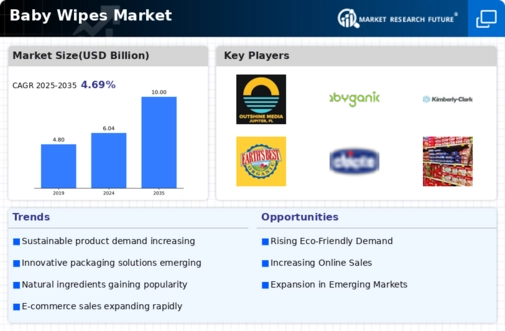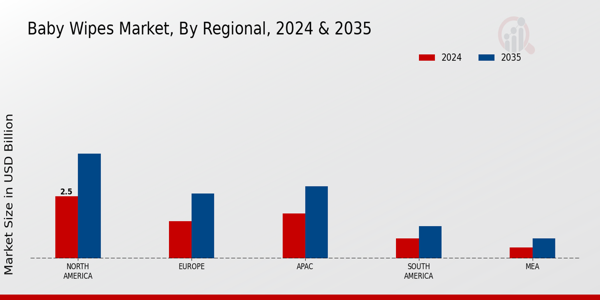Baby Wipes Market Summary
As per MRFR analysis, the Baby Wipes Market Size was estimated at 6.04 USD Billion in 2024. The Baby Wipes industry is projected to grow from 6.323 USD Billion in 2025 to 10.0 USD Billion by 2035, exhibiting a compound annual growth rate (CAGR) of 4.69 during the forecast period 2025 - 2035.
Key Market Trends & Highlights
The Baby Wipes Market is experiencing a notable shift towards natural and eco-friendly products, driven by consumer preferences and innovations.
- The market is witnessing a significant shift towards natural ingredients, reflecting growing consumer demand for safer products.
- Sustainability in packaging is becoming increasingly important, particularly in North America, where eco-conscious consumers are prevalent.
- E-commerce is rapidly expanding, facilitating greater access to a variety of baby wipe products across different demographics.
- The rising awareness of hygiene and the increasing demand for convenience are major drivers propelling the growth of standard and flushable wipes.
Market Size & Forecast
| 2024 Market Size | 6.04 (USD Billion) |
| 2035 Market Size | 10.0 (USD Billion) |
| CAGR (2025 - 2035) | 4.69% |
Major Players
Procter & Gamble (US), Kimberly-Clark (US), Unicharm (JP), Johnson & Johnson (US), Huggies (US), Pampers (US), Burt's Bees (US), Seventh Generation (US), Naty (SE), Babyganics (US)























Leave a Comment